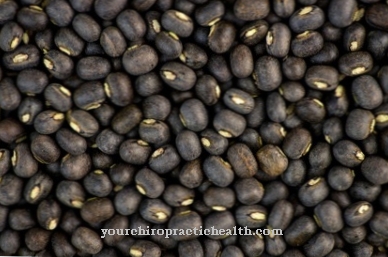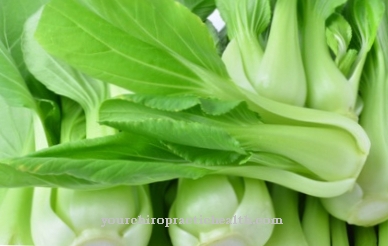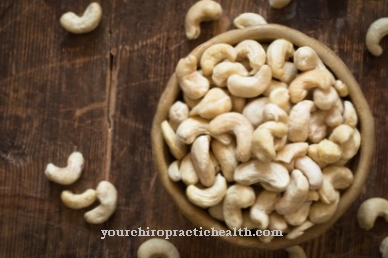At the Seed oats, also Real oats called, it is a plant from the sweet grass family. It is used in gastronomy, in agriculture as animal feed and in medicine.
What you should know about seed oats

The real oat is an annual summer fruit. The panicle-shaped inflorescences on which the grains emerge after self-pollination are typical. They are spindle-shaped and tightly enclosed by the husks, the bracts in the spikelet, even when ripe.
The flowers adapt to the weather: they stay closed when wet, otherwise they open in the afternoon or after 6 p.m. in the steppe climate. The stalks reach a height of 60 to 150 centimeters. Although it is a frugal plant with low demands on the soil, it is most productive in temperate climates with a lot of rainfall. The sowing takes place in spring and from August the grain is ready for harvest. - Already in the Bronze Age people knew seed oats and used them as grain for people and as animal feed. Around 5,000 BC he was known in Poland and on the Black Sea. In Central Europe it was not until 2,400 before Christ that the people north of the Main cultivated the plant.
In Germany, oats were one of the most important types of grain after rye until the middle of the 20th century. Until then it was mainly used as feed for the horses used in agriculture. With the spread of tractors, the demand for the grain fell significantly. When equestrian sport emerged, it rose again and for a few years now, consumers have been aware of the beneficial effects of nutrient-rich and high-quality oats on human health. The food in its original form has a very good taste, better than the other types of grain.
From the original occurrence on the Black Sea, the seed oats spread to the north. Today Russia is the world's largest producer with just under four million tons a year (as of 2013), followed by Canada with almost four and Finland with around 1.2 million tons. Germany ranks eleventh.
Importance to health
Due to its valuable ingredients, the seed oats are well suited for the prevention or alleviation of certain diseases. The high fiber content, especially beta-glucan, has a positive effect on the metabolism and the digestive tract.
It can lower the blood sugar level, has a positive influence on the cholesterol level in the blood, protects the intestinal wall and soothes a nervous stomach. Biotin ensures healthy hair and strong nails and can balance the nervous system. The vitamins of the B complex also contribute to this. The silicic acid (Silicea) contained in real oats also protects and strengthens nails, skin and hair, but also has a positive effect on tendons and ligaments. A brew made from oat grains can act as a tonic to counteract fatigue and insomnia. An extract from oat straw is used for febrile colds because it stimulates the sweat glands and lowers fever.
Porridge, on the other hand, can reduce diarrhea and, in liquid form, relieve coughs. As a source of silicon, the seed oats can tighten skin and connective tissue and are important for the health of cartilage and bones. Osteoarthritis and arthritis can be weakened with silicon. In addition, the element aluminum conducts out of the body, which also has a positive effect on brain activity. The large amounts of protein in real oats increase overall activity. This grain is of particular importance as an antioxidant. More than other varieties, the seed oats can prevent the oxidation of LDL cholesterol and thus its deposition on blood vessel walls.
Ingredients & nutritional values
| Nutritional information | Amount per 100 gram |
| Calories 389 | Fat content 7 g |
| cholesterol 0 mg | sodium 2 mg |
| potassium 429 mg | carbohydrates 66 g |
| Fiber 11 g | protein 17 g |
The ingredients of seed oats can vary slightly because they depend on the cultivation technique and environmental conditions. 100 grams of whole, dehulled grain has 336 kilocalories.
They contain 13.8 grams of water, 17 grams of protein, 7 grams of fat with a large proportion of unsaturated fatty acids, 66 grams of carbohydrates, 11 grams of fiber and 2.9 grams of minerals. These include small amounts of sodium, manganese, iron, copper, zinc and selenium, and lots of potassium, phosphorus, calcium and magnesium. In terms of vitamins, real oats contain some of the B complex as well as folic acid and vitamin E.
Intolerances & allergies
Because of their high calorie content, seed oat products are only conditionally suitable for weight loss, although they keep you feeling full for a long time. Overall, cooked oatmeal hardly causes any allergies. For those who are allergic to cereals, they can therefore be an alternative to muesli and bread, but not if there is a simultaneous cross-reaction between oats and other types of cereal.
Seed oats are low in gluten; therefore people with celiac disease, a gluten sensitivity, can consume it in moderation. However, attention must be paid to purity; the product must not have come into contact with other grains.
Shopping & kitchen tips
Products made from seed oats can be bought ready-made, but you can also prepare them yourself. Whole grains are available in health food stores. They are suitable for dumplings, risotto or casseroles. Fennel, savory or paprika are suitable spices for the hearty dishes.
The grains are capable of germination - oat germs sprout quickly in the warm and are suitable as an ingredient in salads or as a topping. Owners of a grain mill grind the whole grain themselves. They should be stored in a cool, dry and dark place, but not longer than a year because of the high fat content. This also applies to the other products. Oat flakes are among the best known and come in three varieties. The large leaf flakes come from whole oat kernels and swell when soaked or cooked.
Small leaf flakes and melted oatmeal flakes are made from cut kernels. They dissolve in liquid and are therefore drinkable or suitable for babies. Oatmeal is usually available heated. Those who prefer raw food quality buy flakes made from pre-germinated oats. This still contains all the nutrients. Real oat products should be organically grown; this avoids mixing with other types of grain. When buying, you should also pay attention to the whole grain variant, because it contains the most nutrients.
Preparation tips
Breakfast based on oat products means a good foundation. In addition to the classic flakes, porridge made from soaked, raw oatmeal with fresh fruit or nuts tastes great. For porridge, oatmeal simmer for a maximum of three minutes in four to ten times the amount of water.
Honey, dried fruits or vanilla are suitable for sweetening; Gingerbread spices and cinnamon also refine the porridge. Oat flakes are also suitable for burgers: add the flakes to a steamed glassy onion, deglaze with vegetable stock and let it steep. Season with herb salt and parsley and then fry the shaped pieces hot.
Drinks can also be made from seed oats: puree and strain the soaked or simmered flakes. The residues can be reused for porridge or a face mask.













.jpg)

.jpg)
.jpg)











.jpg)